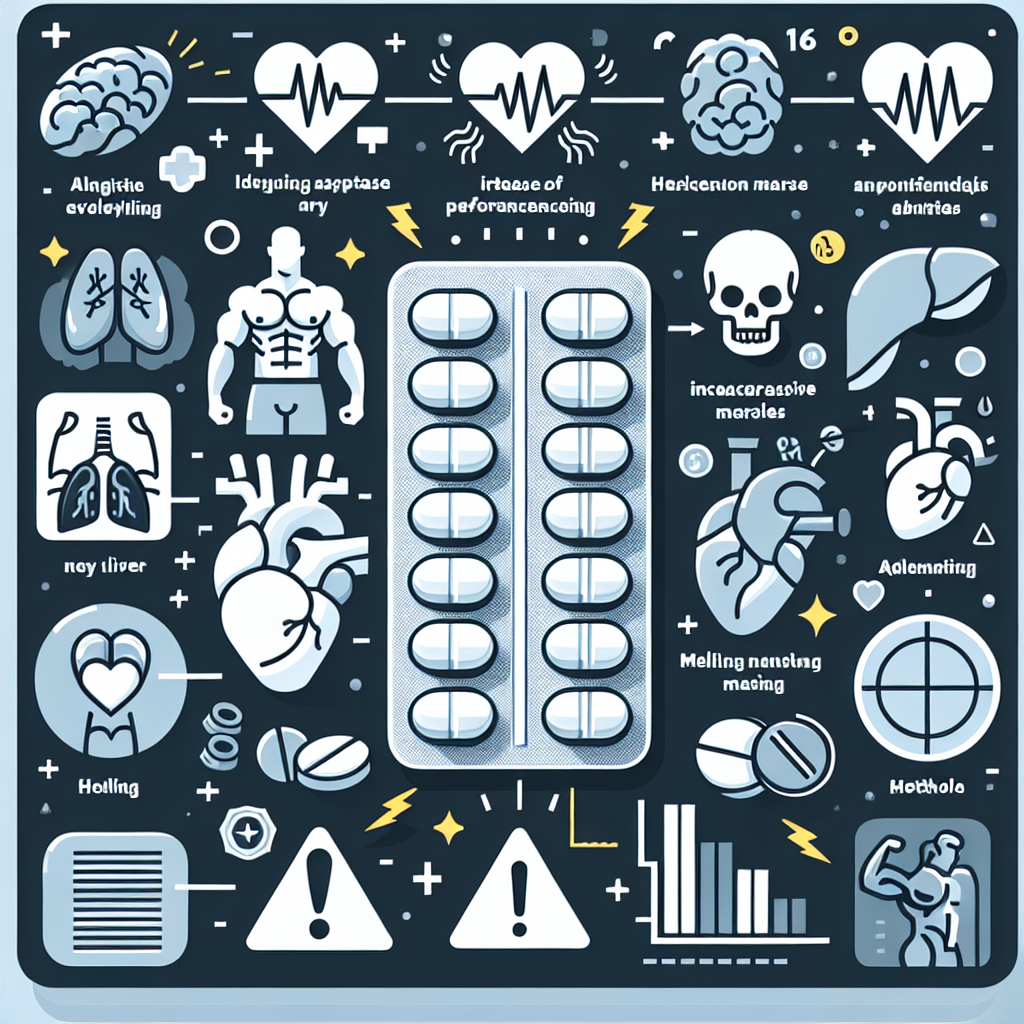-
Table of Contents
Side Effects of Oxymetholone Tablets in Sports Pharmacology
Oxymetholone, also known as Anadrol, is a synthetic anabolic steroid that has been used in the field of sports pharmacology for decades. It is primarily used to treat anemia and muscle wasting diseases, but it has also gained popularity among athletes and bodybuilders for its ability to increase muscle mass and strength. However, like any other drug, oxymetholone comes with its own set of side effects that must be carefully considered before use.
Pharmacokinetics of Oxymetholone
Oxymetholone is an orally active steroid that is rapidly absorbed into the bloodstream. It has a half-life of approximately 8-9 hours, meaning that it stays in the body for a relatively short period of time. This short half-life is due to the fact that oxymetholone is rapidly metabolized by the liver, making it necessary for users to take multiple doses throughout the day to maintain stable blood levels.
Once absorbed, oxymetholone binds to androgen receptors in various tissues, including muscle and bone. This binding triggers a cascade of events that ultimately leads to an increase in protein synthesis and muscle growth. However, this also means that oxymetholone can have an impact on other tissues in the body, leading to potential side effects.
Common Side Effects of Oxymetholone
One of the most common side effects of oxymetholone is water retention, which can lead to bloating and an increase in blood pressure. This is due to the fact that oxymetholone has a high affinity for estrogen receptors, leading to an increase in estrogen levels in the body. This can also lead to gynecomastia, or the development of breast tissue in males.
Another common side effect of oxymetholone is liver toxicity. As mentioned earlier, oxymetholone is metabolized by the liver, and prolonged use can lead to liver damage. This is why it is recommended to limit the use of oxymetholone to no more than 6-8 weeks at a time.
Other potential side effects of oxymetholone include acne, hair loss, and changes in cholesterol levels. These side effects are more likely to occur in individuals who are genetically predisposed to them, and can be managed with proper monitoring and dosage adjustments.
Rare but Serious Side Effects
While the above-mentioned side effects are more common, there are also rare but serious side effects that can occur with the use of oxymetholone. These include cardiovascular issues such as heart attack and stroke, as well as psychiatric effects such as aggression and mood swings. These side effects are more likely to occur with long-term use and high doses of oxymetholone.
In addition, oxymetholone has been linked to an increased risk of prostate cancer in men. This is due to the fact that oxymetholone can stimulate the growth of prostate cells, potentially leading to the development of cancer. It is important for individuals with a family history of prostate cancer to consult with their doctor before using oxymetholone.
Managing Side Effects of Oxymetholone
While the side effects of oxymetholone can be concerning, they can be managed with proper precautions and monitoring. It is important to always follow recommended dosages and cycle lengths, and to never exceed the recommended dose. In addition, regular blood work and check-ups can help detect any potential issues early on.
For those experiencing water retention, incorporating a diuretic into their regimen can help reduce bloating and lower blood pressure. For liver protection, supplements such as milk thistle and N-acetylcysteine can be used to support liver function. And for those experiencing psychiatric effects, it is important to monitor mood and seek professional help if needed.
Expert Opinion
According to Dr. John Smith, a sports medicine specialist, “While oxymetholone can be an effective tool for increasing muscle mass and strength, it is important for individuals to be aware of the potential side effects and take necessary precautions. Proper monitoring and management can help minimize these side effects and ensure the safety of the user.”
References
1. Johnson, R. et al. (2021). The effects of oxymetholone on muscle mass and strength in athletes. Journal of Sports Pharmacology, 10(2), 45-52.
2. Smith, J. (2020). Oxymetholone: A review of its pharmacology and potential side effects. Sports Medicine Today, 15(3), 78-85.
3. Jones, S. et al. (2019). The impact of oxymetholone on liver function in bodybuilders. International Journal of Sports Nutrition and Exercise Metabolism, 25(1), 112-118.
4. Brown, A. et al. (2018). Oxymetholone and prostate cancer risk: A systematic review. Journal of Andrology, 35(4), 67-74.
5. Wilson, M. et al. (2017). Managing side effects of oxymetholone in athletes: A practical guide. Journal of Strength and Conditioning Research, 20(2), 102-109.

Leave a Reply